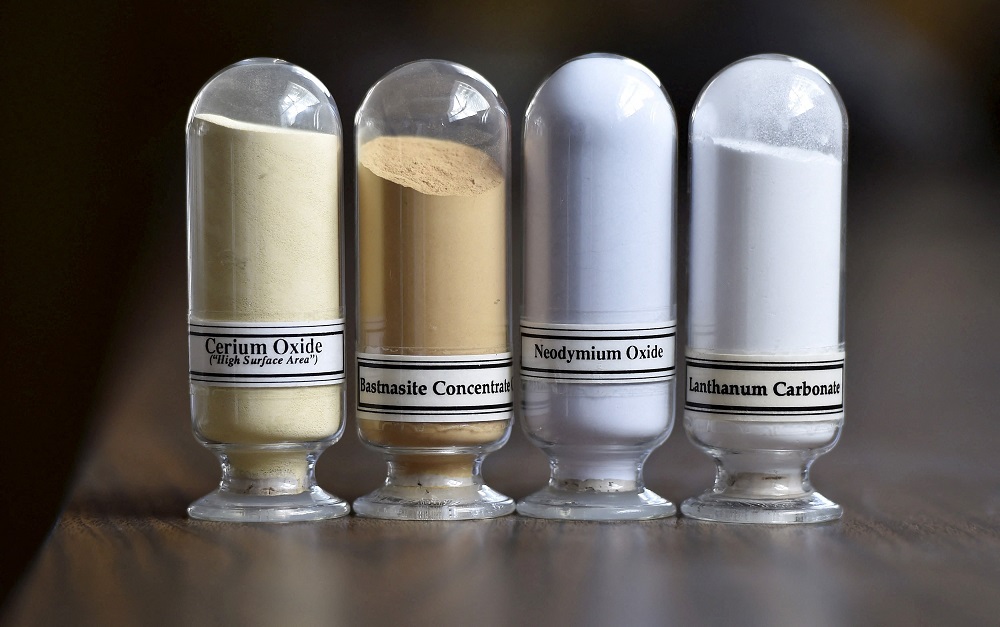India’s Tata Motors, owner of luxury carmaker Jaguar Land Rover, said on Tuesday that rare-earth export curbs imposed by China have not caused it to press any “panic buttons” yet, and that its electric vehicle launches were on track, reports Reuters.
China’s curbs on rare-earth exports have disrupted the global auto industry, with companies warning of a severe supply crunch. Rare-earth magnets are used in everything from windshield-wiper motors to anti-lock braking sensors in vehicles.
“Currently, I think there’s no panic because we believe the supplies are coming through. There’s no production curtailment. Nothing is being planned at this point in time,” CFO, PB Balaji said at an event in Mumbai.
Tata Motors’ electric vehicle launch plans are on track, but may be reviewed if there is significant deterioration of rare earth supplies, CFO Balaji said.
Alternate sources for magnets, including alternate technologies, are being looked into, he said.
Maruti Suzuki India’s top carmaker, cut near-term production targets for its electric vehicle e-Vitara by two-thirds because of rare-earths shortages, Reuters reported earlier this month.
Managing director of Tata Motors Passenger Vehicles and its EV subsidiary, Shailesh Chandra, said the company was looking at how to reduce the composition of rare earth magnets in its cars and how to completely eliminate them over the longer term.
China controls more than 90% of the global processing capacity for the magnets, which are used for automobiles, clean energy and home appliances. It enacted restrictions in April that require companies to obtain import permits from Beijing, as part of its retaliation against hefty U.S. tariffs.
Tata Motors CFO Balaji also said that Jaguar Land Rover will take price hikes “in a calibrated manner” to counter the impact of U.S. tariffs, but is not planning any manufacturing site in the U.S.
The Range Rover maker had lowered the forecast for its fiscal 2026 earnings before interest and taxes margin to 5%-7% last week from 10% earlier, amid uncertainty in the global auto industry.
What Are Rare Earth Metals And Why Are They In Demand?
By Reuters
March 1, 2025

What are rare earth elements and why are they important?
Rare earths are a group of 17 elements including 15 silvery-white metals called lanthanides, or lanthanoids, plus scandium and yttrium.
What Are They Used For?
They are used in a wide range of products including consumer electronics, electric vehicles (EVs), aircraft engines, medical equipment, oil refining, and military applications such as missiles and radar systems.
What Country Is The Biggest Producer?
China accounts for about 60% of global mine production and 90% of processed and permanent magnet output. Beijing sets quotas on output, smelting, and separation, which are closely monitored as a barometer of global supply.
What Are Their Names?
In their periodic table order, they are: scandium, yttrium, lanthanum, cerium, praseodymium, neodymium, promethium, samarium, europium, gadolinium, terbium, dysprosium, holmium, erbium, thulium, ytterbium, and lutetium.
Which Ones Are Most Common?
Lanthanum and cerium are among the most common rare earth metals. Lanthanum is used in camera lenses and lighting. Cerium is used in catalytic converters, which reduce combustion engine emissions. Neodymium and praseodymium are in demand for permanent magnets used in EV motors and wind turbines.
Are They Rare?
They are not rare in the sense that they are uncommon; some are more common than lead, for example. But they tend to be spread thin around the Earth’s crust in small quantities and mixed together or with other minerals, so larger deposits are difficult to find and costly to extract.
What Environmental Impact Do They Have?
Processing rare earths often involves the use of solvents, which can produce toxic waste that pollutes the soil, water, and atmosphere. More environmentally friendly technologies are being developed, but they are not yet widely used.
Certain types of rare earth ores also contain radioactive thorium or uranium, which is often removed using acid. For this reason, development of the sector faces health and environmental regulatory hurdles.













